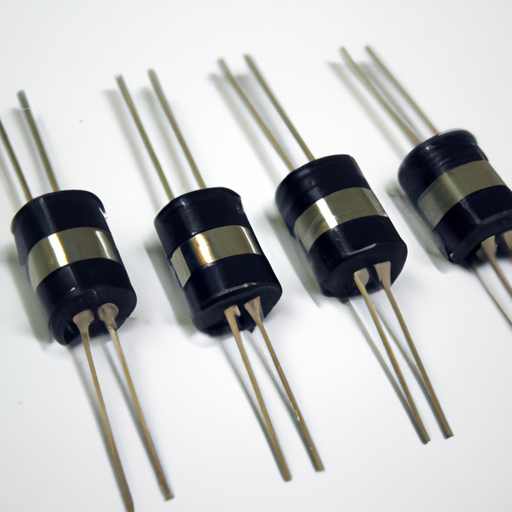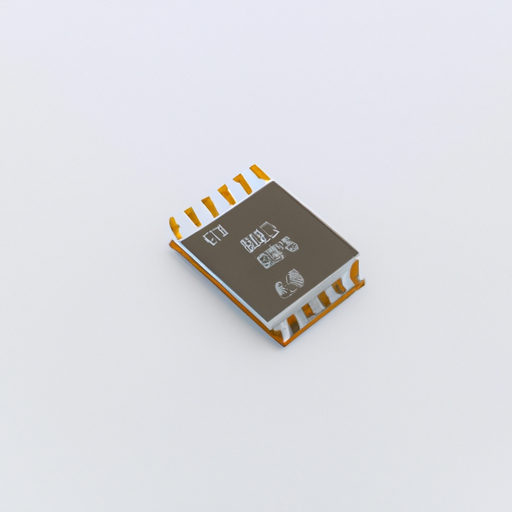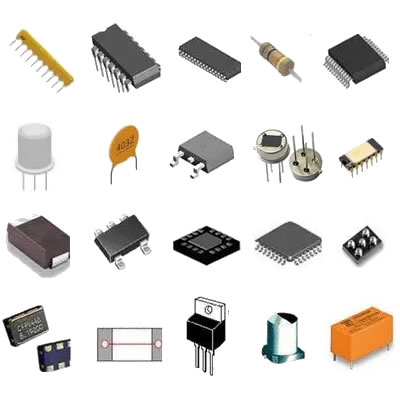What is the price of the popular resistor parameters and models in stock?
What is the Price of Popular Resistor Parameters and Models in Stock?
I. Introduction
Resistors are fundamental components in electronic circuits, serving the crucial role of controlling current flow. They are essential for protecting sensitive components, dividing voltages, and setting bias points in various applications. Understanding the different parameters and models of resistors is vital for engineers and hobbyists alike, as these factors significantly influence both performance and cost. This article aims to provide a comprehensive overview of resistor pricing based on their parameters and models, helping readers make informed purchasing decisions.
II. Understanding Resistor Parameters
A. Resistance Value
The resistance value, measured in ohms (Ω), is the primary characteristic of a resistor. It determines how much current will flow through the resistor when a voltage is applied. Common resistance values range from fractions of an ohm to millions of ohms, with standard values often found in the E12 and E24 series. For instance, a 1kΩ resistor is widely used in voltage dividers and signal conditioning circuits. The price of resistors can vary significantly based on their resistance value, with lower resistance values generally being less expensive.
B. Tolerance
Tolerance refers to the allowable deviation from the specified resistance value, expressed as a percentage. For example, a resistor with a tolerance of ±5% can have a resistance value anywhere between 950Ω and 1050Ω if it is rated at 1kΩ. Tighter tolerances, such as ±1% or ±0.1%, are often required in precision applications, leading to higher costs. Therefore, resistors with lower tolerance ratings typically command a premium price due to their enhanced reliability and accuracy.
C. Power Rating
The power rating of a resistor indicates the maximum amount of power it can dissipate without being damaged, measured in watts (W). Common power ratings include 1/8W, 1/4W, 1/2W, and 1W. Resistors with higher power ratings are generally more expensive due to the materials and manufacturing processes required to handle greater heat dissipation. For instance, a 1W wirewound resistor will typically cost more than a 1/4W carbon film resistor, reflecting its ability to handle higher power loads.
D. Temperature Coefficient
The temperature coefficient of a resistor indicates how much its resistance changes with temperature, typically expressed in parts per million per degree Celsius (ppm/°C). Resistors with low temperature coefficients are essential in precision applications where temperature variations can significantly affect performance. These resistors, often made from specialized materials, tend to be more expensive than standard resistors with higher temperature coefficients. For example, a precision metal film resistor with a temperature coefficient of ±10ppm/°C will be priced higher than a standard carbon film resistor.
E. Noise
Noise in resistors refers to the unwanted electrical signals that can interfere with circuit performance. Different types of resistors exhibit varying noise levels, with carbon film resistors generally producing more noise than metal film or wirewound resistors. In applications where low noise is critical, such as audio equipment or sensitive measurement devices, the cost of low-noise resistors can be significantly higher. Understanding the noise characteristics of resistors is essential for selecting the right component for specific applications.
III. Popular Resistor Models
A. Carbon Film Resistors
Carbon film resistors are among the most common types used in electronic circuits. They are made by depositing a thin layer of carbon on a ceramic substrate, providing a good balance of performance and cost. Typically, carbon film resistors are available in a wide range of resistance values and tolerances, with prices generally ranging from a few cents to a couple of dollars, depending on specifications.
B. Metal Film Resistors
Metal film resistors offer better performance than carbon film resistors, particularly in terms of tolerance and temperature stability. They are made by depositing a thin layer of metal onto a ceramic substrate, resulting in lower noise and higher precision. Due to their superior characteristics, metal film resistors are often priced higher, typically ranging from a few cents to several dollars, depending on their specifications.
C. Wirewound Resistors
Wirewound resistors are constructed by winding a metal wire around a ceramic or fiberglass core. They are known for their high power ratings and excellent stability, making them suitable for high-current applications. However, their construction leads to higher costs, with prices ranging from a few dollars to over $20, depending on power rating and resistance value.
D. Surface Mount Resistors
Surface mount resistors (SMD) are designed for automated assembly processes and are commonly used in modern electronics. They are compact and available in various resistance values and tolerances. Pricing for surface mount resistors can vary widely, typically ranging from a few cents to several dollars, influenced by factors such as size, tolerance, and manufacturer.
E. Specialty Resistors
Specialty resistors, including precision, high-power, and high-voltage resistors, cater to specific applications that require unique characteristics. These resistors often come with higher price tags due to their specialized materials and manufacturing processes. Prices for specialty resistors can range from a few dollars to hundreds of dollars, depending on the specifications and intended use.
IV. Factors Influencing Resistor Pricing
A. Material Composition
The materials used in resistor construction significantly impact performance and cost. For instance, metal film resistors, which use high-purity metal, are generally more expensive than carbon film resistors. Similarly, specialty materials used in high-precision resistors can drive up costs.
B. Manufacturing Processes
The complexity of the manufacturing process also affects pricing. Resistors that require more intricate production techniques, such as wirewound or specialty resistors, tend to be more expensive than simpler carbon film resistors.
C. Market Demand and Supply
Market dynamics play a crucial role in pricing. Fluctuations in demand for specific resistor types can lead to price changes. For example, during periods of high demand for electronic components, resistor prices may increase due to supply constraints.
D. Brand Reputation
Brand reputation can influence pricing strategies. Well-known manufacturers with a track record of quality may charge higher prices for their products, while lesser-known brands may offer more competitive pricing to attract customers.
E. Bulk Purchasing vs. Retail Pricing
Purchasing resistors in bulk can lead to significant cost savings compared to buying individual units. Many suppliers offer discounts for bulk orders, making it more economical for businesses and hobbyists who require large quantities.
V. Current Market Trends
A. Overview of the Current State of the Resistor Market
The resistor market has seen steady growth, driven by the increasing demand for electronic devices across various industries, including automotive, telecommunications, and consumer electronics. As technology advances, the need for more precise and reliable resistors continues to rise.
B. Price Fluctuations and Their Causes
Recent global events, such as supply chain disruptions and increased raw material costs, have led to fluctuations in resistor prices. Additionally, the ongoing transition to more advanced technologies, such as electric vehicles and renewable energy systems, has created a surge in demand for high-performance resistors.
C. Predictions for Future Pricing Trends
Looking ahead, it is expected that resistor prices will continue to be influenced by technological advancements and market demand. As manufacturers invest in new production techniques and materials, there may be opportunities for cost reductions in certain resistor types. However, ongoing supply chain challenges could keep prices elevated in the short term.
VI. Conclusion
In summary, understanding the various parameters and models of resistors is essential for making informed purchasing decisions. Factors such as resistance value, tolerance, power rating, temperature coefficient, and noise levels all play a significant role in determining pricing. Additionally, the choice of resistor model—whether carbon film, metal film, wirewound, surface mount, or specialty—can greatly influence costs.
As the electronics industry continues to evolve, staying informed about current market trends and pricing dynamics will be crucial for engineers and hobbyists alike. By understanding resistor specifications and their impact on pricing, individuals can make cost-effective choices that meet their project requirements.
VII. References
1. "Resistor Basics: Understanding Resistor Parameters." Electronics Tutorials.
2. "The Impact of Tolerance on Resistor Pricing." Electronic Design.
3. "Market Trends in Resistor Pricing." Resistor World.
4. "Understanding Resistor Types and Their Applications." Digi-Key Electronics.
5. "The Future of Resistor Pricing in the Electronics Industry." Electronic Components News.







